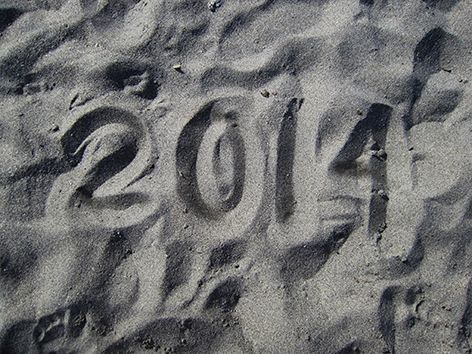Our Top 10 New Year's Resolutions for 2015
DECEMBER 31, 2014 -- While we have accomplished a lot in the last year, we know that we have plenty of work ahead of us in 2015.
As much as we wish it were so, we realize oil and chemical spills, vessel groundings, and marine debris will not disappear from the ocean and coasts in the next year.
That means our experts have to be ready for anything, but specifically, for providing scientific solutions to marine pollution.
Here are our plans for doing that in 2015:
- Exercise more. We have big plans for participating in oil spill exercises and performing trainings that will better prepare us and others to deal with threats from marine pollution.
- Be safer. We work up and down the nation's coastlines, from tropical to arctic environments. Many of these field locations are remote and potentially hazardous. We will continue to assess and improve our equipment and procedures to be able to work safely anywhere our services are needed.
- Keep others safe. We are improving our chemical response software CAMEO, which will help chemical disaster responders and planners get the critical data they need, when and where they need it.
- Get others involved. We are partnering with the University of Washington to explore ways average citizens can help contribute to oil spill science.
- Communicate more effectively. This spring, we will be hosting a workshop for Alaskan communicators and science journalists on research-based considerations for communicating about chemical dispersants and oil spills.
- Be quicker and more efficient. We will be releasing a series of sampling guidelines for collecting high-priority, time-sensitive data in the Arctic to support Natural Resource Damage Assessment and other oil spill science.
- Sport a new look. An updated, more mobile-friendly look is in the works for NOAA's Damage Assessment, Remediation, and Restoration Program website. Stay tuned for the coming changes at www.darrp.noaa.gov.
- Unlock access to data. We are getting ready to release public versions of an online tool that brings together data from multiple sources into a single place for easier data access, analysis, visualization, and reporting. This online application, known as DIVER Explorer, pulls together natural resource and environmental chemistry data from the Deepwater Horizon oil spill damage assessment, and also for the Great Lakes and U.S. coastal regions.
- Clean up our act. Or rather, keep encouraging others to clean up their act and clean up our coasts. We're helping educate people about marine debris and fund others' efforts to keep everyone's trash, including plastics, out of our ocean.
- Say farewell. To oil tankers with single hulls, that is. January 1, 2015 marks the final phase-out of single hull tankers, a direct outcome of the 1989 Exxon Valdez oil spill.
Photo used via Creative Commons: Marcia Conner, Attribution-NonCommercial-ShareAlike 2.0 Generic License
 An official website of the United States government.
An official website of the United States government. 
